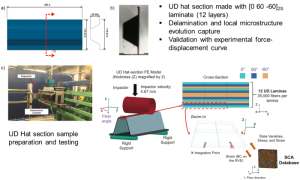Get ready to dive into the world of 3D printing in industrial applications, where innovation meets efficiency in a captivating blend of technology and creativity. From its humble beginnings to its current impact, this topic promises to be a fascinating journey for all readers.
As we explore the various aspects of 3D printing in industrial settings, we’ll uncover the key advancements, challenges, and opportunities that shape the future of manufacturing processes.
Overview of 3D printing in industrial applications

D printing, also known as additive manufacturing, has revolutionized the industrial sector by providing innovative solutions for manufacturing processes. Let’s explore the history, evolution, and significance of 3D printing in industrial applications.
History of 3D printing in industrial settings
The concept of 3D printing originated in the 1980s, with the invention of stereolithography by Charles Hull. This marked the beginning of a new era in manufacturing, allowing for the creation of complex shapes and structures layer by layer. Over the years, 3D printing technology has advanced significantly, leading to its widespread adoption in various industries.
Evolution of 3D printing technologies for industrial use
Initially limited to prototyping, 3D printing has evolved to encompass a wide range of materials and processes suitable for industrial production. From selective laser sintering (SLS) to fused deposition modeling (FDM) and powder bed fusion, there are now multiple technologies available to meet the diverse needs of industrial applications. These advancements have enabled faster production, improved accuracy, and cost-effective manufacturing solutions.
Significance of 3D printing in revolutionizing manufacturing processes
The adoption of 3D printing in industrial settings has transformed traditional manufacturing processes by offering flexibility, customization, and efficiency. Companies can now produce complex geometries, reduce waste, and streamline production workflows with the help of additive manufacturing. This technology has also paved the way for sustainable practices, as it allows for on-demand production and localized manufacturing. Overall, 3D printing has played a crucial role in reshaping the industrial landscape and driving innovation across various sectors.
Types of 3D printing technologies used in industries
D printing has revolutionized various industries by offering a range of innovative solutions. Different types of 3D printing technologies are commonly used in industrial applications, each with its unique strengths and limitations. Let’s explore the various methods and their benefits in different industries.
Fused Deposition Modeling (FDM)
FDM is one of the most widely used 3D printing technologies in industries due to its affordability and versatility. It works by melting a thermoplastic filament and depositing it layer by layer to create the desired object. FDM is commonly used in industries such as automotive, aerospace, and consumer goods for rapid prototyping and low-volume manufacturing.
Stereolithography (SLA)
SLA is a 3D printing technology that uses a laser to cure liquid resin into solid layers. This method is known for its high level of detail and accuracy, making it ideal for industries like jewelry, dental, and medical where precision is crucial. SLA is often used for creating intricate and complex geometries.
Selective Laser Sintering (SLS)
SLS is a 3D printing technology that uses a laser to sinter powdered material, typically nylon or metal, into solid layers. This method is commonly used in industries such as aerospace, automotive, and electronics for producing functional prototypes and end-use parts. SLS is known for its strength, durability, and ability to work with a variety of materials.
Direct Metal Laser Sintering (DMLS)
DMLS is a 3D printing technology that uses a high-powered laser to sinter metal powder into solid parts. This method is widely used in industries like aerospace, healthcare, and automotive for producing complex metal components with high precision. DMLS allows for the creation of fully functional metal parts without the need for traditional machining.
Electron Beam Melting (EBM)
EBM is a 3D printing technology that uses an electron beam to melt and fuse metal powder together layer by layer. This method is commonly used in industries such as aerospace, defense, and medical for producing high-strength, lightweight metal parts. EBM is known for its ability to create parts with excellent mechanical properties and is often used for critical applications.
Advantages of integrating 3D printing in industrial processes
Integrating 3D printing into industrial processes offers numerous benefits that can revolutionize the manufacturing landscape.
Cost-Effectiveness and Customization
3D printing allows for cost-effective production of complex parts and components, reducing material waste and minimizing the need for expensive tooling. Moreover, it enables customization of products according to specific requirements, leading to enhanced product personalization and customer satisfaction.
Acceleration of Prototyping and Product Development
One of the key advantages of 3D printing in industrial applications is its ability to accelerate prototyping and product development cycles. By rapidly creating prototypes and iterating designs, companies can bring new products to market faster, gaining a competitive edge in the industry.
Environmental Advantages
3D printing offers environmental benefits by reducing material wastage, energy consumption, and carbon footprint. Traditional manufacturing processes often generate excess waste and consume more energy, whereas additive manufacturing techniques used in 3D printing are more sustainable and eco-friendly.
Case studies of successful 3D printing implementations in industries
D printing has revolutionized the manufacturing processes in various industries, leading to increased efficiency and innovation. Let’s explore some case studies where companies have successfully integrated 3D printing into their workflows to achieve remarkable results.
Automotive Industry
The automotive industry has embraced 3D printing to enhance prototyping, manufacturing, and even spare parts production. One notable example is BMW, which utilized 3D printing to produce custom tools and fixtures for their assembly lines. This innovation led to significant cost savings and reduced production time, ultimately improving their overall competitiveness in the market.
Aerospace Industry
In the aerospace sector, companies like SpaceX have leveraged 3D printing technology to manufacture complex and lightweight components for their rockets and spacecraft. By using advanced metal 3D printing techniques, SpaceX has been able to optimize designs, reduce weight, and increase fuel efficiency, demonstrating the immense impact of 3D printing on innovation and efficiency in the industry.
Healthcare Industry
The healthcare industry has also benefited greatly from 3D printing, with applications ranging from custom implants to patient-specific surgical guides. For instance, medical device companies like Stryker have successfully integrated 3D printing to produce personalized implants for patients, leading to better treatment outcomes and improved patient care. This adoption of 3D printing technology has revolutionized the way medical devices are designed and manufactured, showcasing its potential to transform the healthcare sector.
Consumer Goods Industry
Companies in the consumer goods industry, such as Nike, have embraced 3D printing for prototyping and producing customized products. Nike’s Flyknit shoes incorporate 3D printed components, allowing for personalized and innovative designs that cater to individual preferences. By leveraging 3D printing technology, Nike has been able to stay ahead of competitors, meet consumer demands for customization, and drive creativity in their product offerings.
Conclusion
These case studies highlight the diverse applications and benefits of 3D printing across various industries. By adopting this technology, companies have been able to drive innovation, improve efficiency, and enhance their competitiveness in the market. As 3D printing continues to evolve and advance, we can expect to see even more groundbreaking implementations that push the boundaries of traditional manufacturing processes.
INDUSTRIAL GOODS AND SERVICES

D printing has revolutionized the production of industrial goods, offering new possibilities for customization, rapid prototyping, and cost-effective manufacturing processes. In addition, 3D printing services have started to disrupt traditional supply chains by enabling on-demand production and reducing lead times significantly. As the technology continues to evolve, we can expect further advancements that will enhance industrial goods and services in the future.
Role of 3D Printing in Industrial Goods Production
- 3D printing allows for the creation of complex geometries and intricate designs that are difficult or impossible to achieve with traditional manufacturing methods.
- Companies can now produce customized industrial parts on-demand, reducing inventory costs and waste.
- Rapid prototyping with 3D printing accelerates the product development cycle, enabling faster iterations and time-to-market.
Transformation of Supply Chain with 3D Printing Services
- 3D printing services offer decentralized production capabilities, allowing for localized manufacturing and reduced shipping distances.
- On-demand production through 3D printing can help streamline the supply chain by eliminating the need for large inventories and minimizing stockouts.
- Supply chain disruptions can be mitigated with 3D printing, as companies can quickly adapt to changes in demand or unforeseen events.
Future Advancements in 3D Printing for Industrial Goods
- Advancements in materials science will expand the range of industrial-grade materials available for 3D printing, allowing for more robust and durable parts.
- Increased automation in 3D printing processes will enhance efficiency and scalability, making it easier to integrate 3D printing into large-scale industrial production.
- Developments in multi-material and multi-color 3D printing technologies will enable more complex and functional industrial products to be manufactured with a single print job.
Ultimate Conclusion
In conclusion, the realm of 3D printing in industrial applications is a dynamic landscape filled with promise and potential. From cost-effective production to sustainable practices, the impact of this technology continues to redefine the way industries operate and innovate.
Query Resolution
What are some key benefits of integrating 3D printing in industrial processes?
Some key benefits include cost-effectiveness, customization, accelerated prototyping, and environmental advantages.
Which industries can benefit the most from specific types of 3D printing technologies?
Industries like aerospace, automotive, and healthcare can benefit greatly from different types of 3D printing technologies tailored to their specific needs.
How does 3D printing impact the overall competitiveness of companies in industrial sectors?
3D printing can enhance innovation, efficiency, and flexibility, giving companies a competitive edge in the market.




